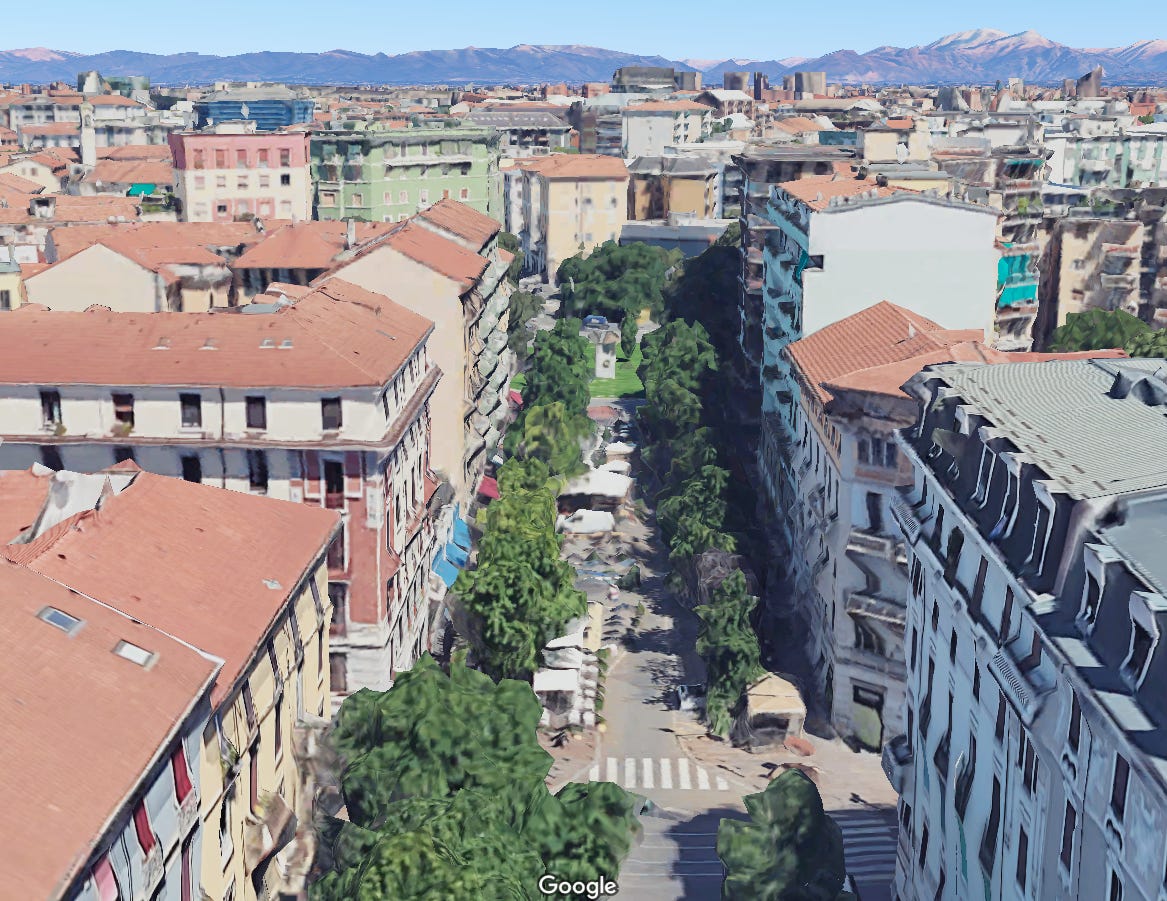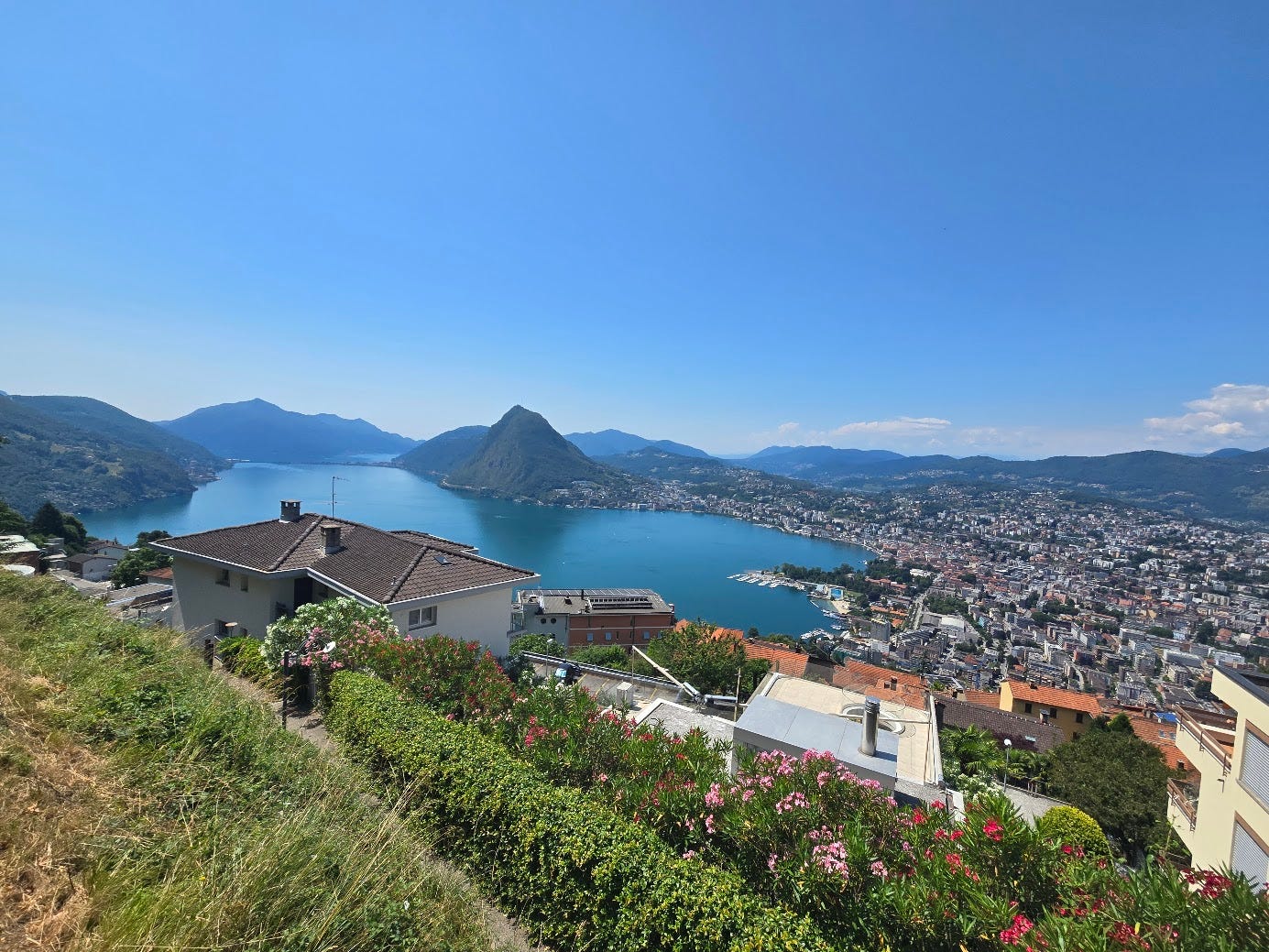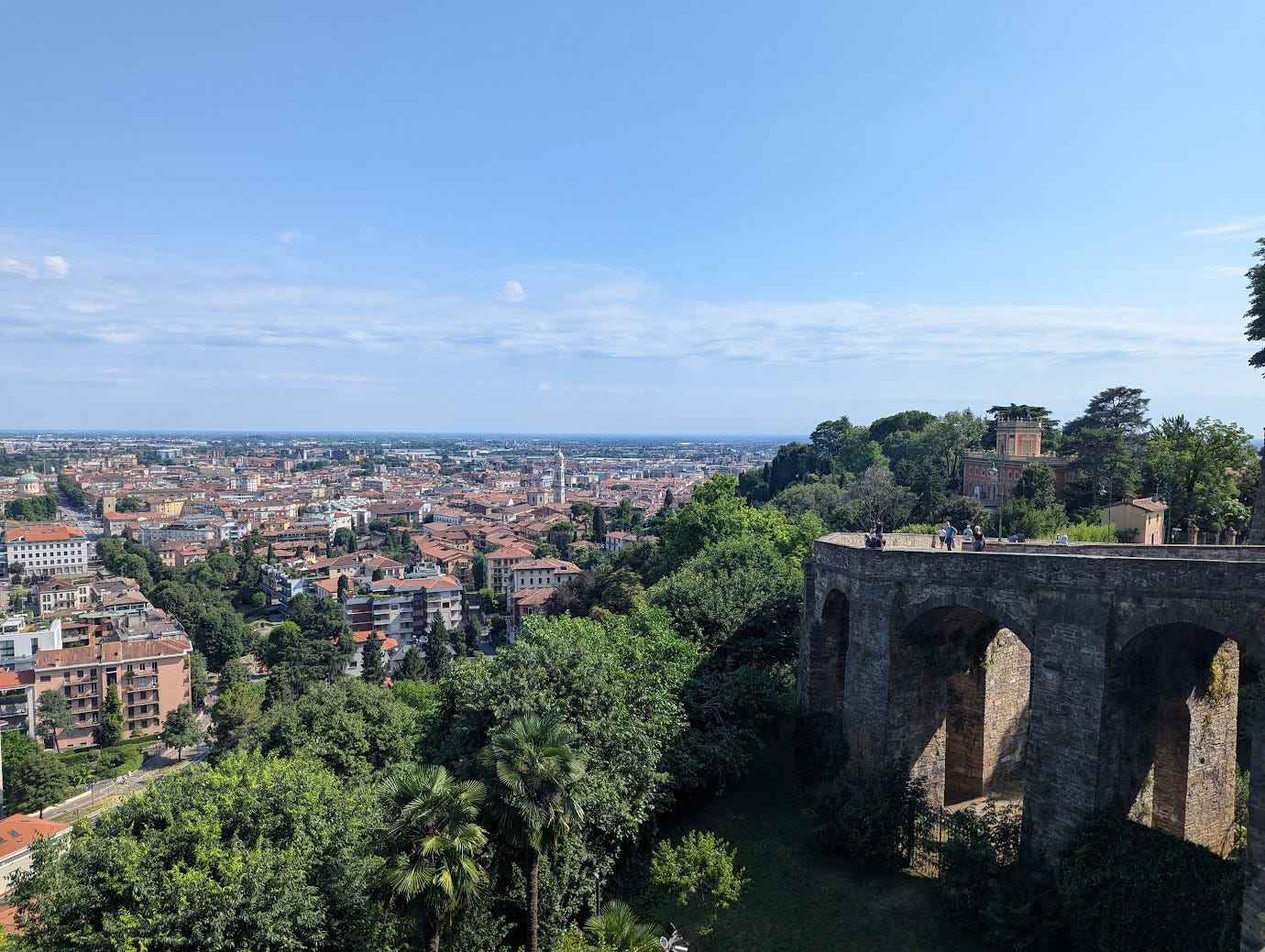Notes On Northern Italy
Why Italy is less woke than Germany and other observations
Milan is international, refined, and easy to get around. Good food, but not particularly varied. Lots of (very good!) meat and cheese.
An exception is the Milan chinatown, which is modest but still ethnically insular so there are lots of restaurants run, staffed, and patronized by mostly Chinese people. The Zhejiang cuisine is authentic and spicy! A welcome break from heavy Lombardese cuisine.
Milanese urbanism has the standard European advantages over North American cities. Lots of narrow and pedestrianized streets, dense, mid-rise apartments without setbacks, robust public transportation, and mature tree-lined streets. I found that Milan was more educational about the advantages of these designs than other cities because it contained examples of both styles in close proximity. The streets around the central train station are more American-style broad, six-lane stroads with lots of parking and narrow sidewalks. They have little shade, lots of noise, nowhere to sit and are unpleasant to be around.
But just a few blocks away in Isola, the streets are narrow, tree-lined, and full of pedestrianized outdoor seating areas.
This proximity provides a more controlled experiment than comparing the cities full of great streets in Europe to one’s hometown in America and confirms the advantages of human-scale street design.
Milan was a stark contrast to Frankfurt in several ways. Frankfurt was full of foreign homeless/down-and-outs wandering the streets which were covered in graffiti and money-transfer tobacco shops. We were in the touristy downtowns of both cities but observed much less homelessness and disorder in Milan.
Italy, or at least Milan compared to Frankfurt, is very diverse but somehow more cohesive. Italy also feels less woke than Germany. Italians seem more comfortable with traditional gender roles and beauty standards. All German ads seem to feature some version of the solo-poly-parpalegic-hijabi-girl but in Italy it's just hot celebrities. Maybe it's because the elites in Italy are more concentrated in fashion which is inherently more gendered and sexual.
Lugano, Switzerland is a stunning lakeside city. This natural beauty coexists with a surprisingly dense and modern housing stock, though this density is so far insufficient to counteract the high demand and other supply restrictions pushing Switzerland’s home price to income ratio above the US and UK.
The town has lots of young party-goers at night. The food in town is mostly mediocre and pricey. The funicular train is an expensive tourist trap, all the locals use the bus which is faster and has better A/C anyway. Head up Mt. Bre and walk through the tiny village of Bre. Go to the cafe and get the jam!
Bergamo is an old city perched on the last hill of the Alps before the wide, flat plain of Lombardy. The upper city on the hill is full of tourists, but almost all Italian tourists so it still feels authentic. You can see Milan from 50 miles away across the plain and ponder the city’s use as a Roman outpost while eating cheese and wine. Definitely worth a stop!
Overall the area around Northern Italy gives a balanced view of the advantages and drawbacks of living in Europe. They really do have much better cities and beautiful views but there are reasons the net immigration flows only go one way.








"there are reasons the net immigration flows only go one way."
I'd really like to know what your thoughts are about some of the reasons!
Had Italy never unified the north and south, do you think northern Italy would be in a better trajectory today.